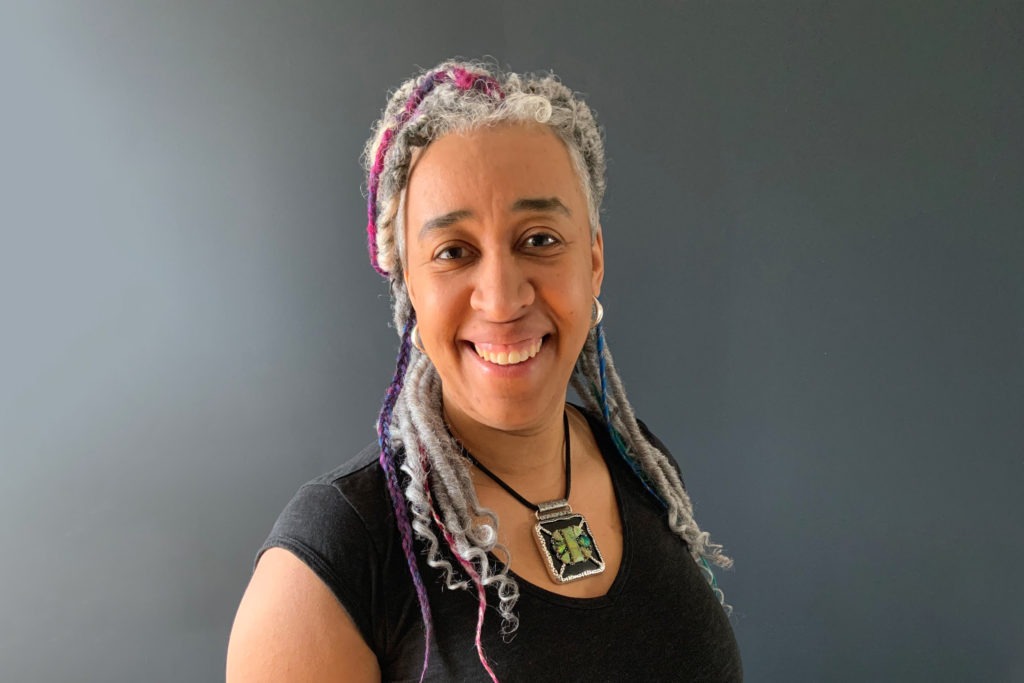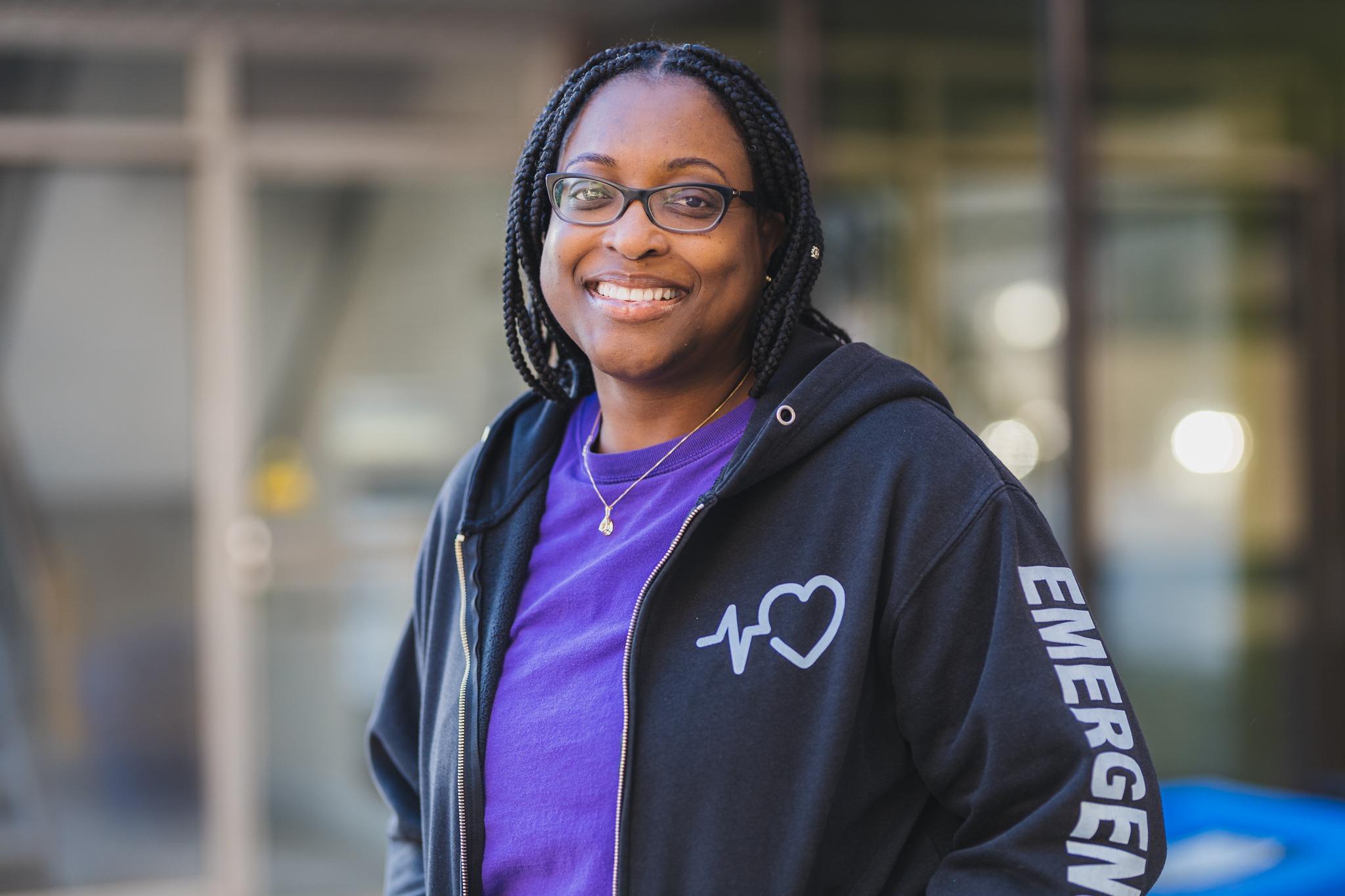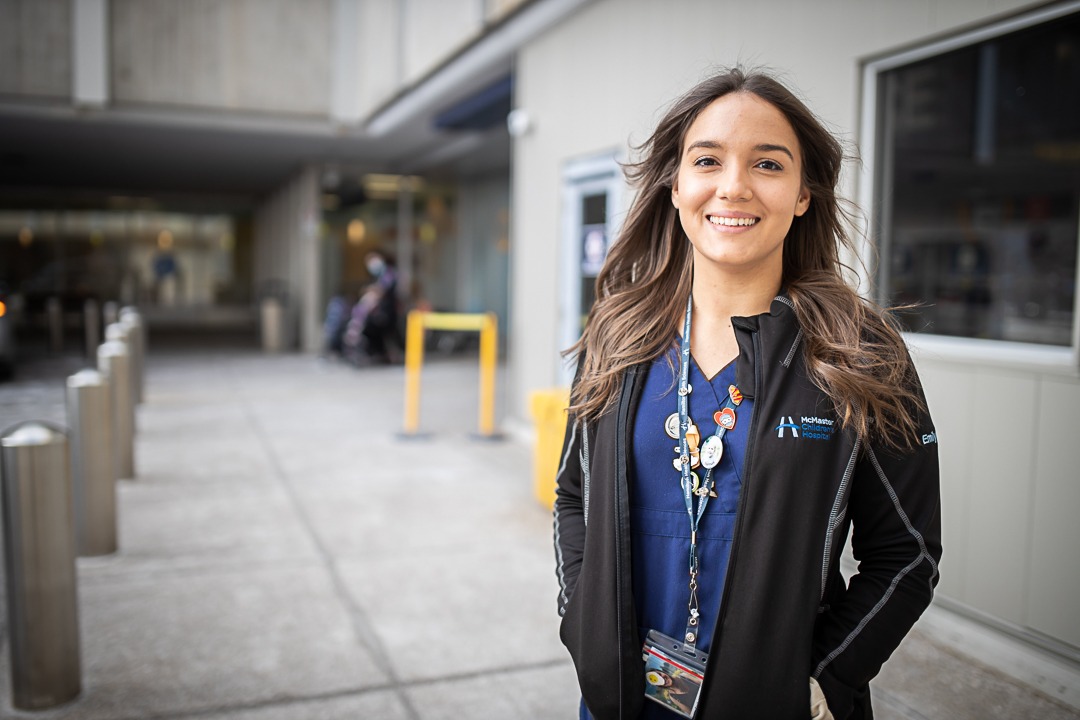
Dr. Kassia Johnson wants you to get it wrong
Hamilton Health Sciences’ (HHS) first-ever Senior Medical Director of Equity, Diversity and Inclusion (EDI) says the work of becoming anti-racist includes being curious, listening, being humble and learning how systemic oppression is woven into the fabric of large organizations.
Dr. Kassia Johnson has been in the role since last May. The job was created to look at EDI issues within medical affairs and start to work with physicians and other credentialed health-care providers to understand and address concerns.
“In this space, you’re going to get it wrong and we have to figure out how to get it wrong, genuinely apologize, and move forward and learn.”
So far, Johnson has been having a lot of peer-to-peer conversations about equity and systemic racism, which can sometimes be uncomfortable.
“Our concern with getting it wrong is unfortunate,” she says. “Sometimes we’re more concerned with getting it right than we are about at least having the conversation. Sometimes in health care we go to that protectionism of ‘we can’t get it wrong.’ Well in this space, you’re going to get it wrong and we have to figure out how to get it wrong, genuinely apologize, and move forward and learn. Our inaction because of discomfort is upholding a system of oppression.”
Looking for a one-size-fits-all anti-racism action or even straightforward EDI language is challenging.
“You can’t simplify this work,” Johnson says. “You can’t make it binary. It’s messy, it’s uncomfortable, it’s tiring, it’s humbling, it’s eye-opening, it’s infuriating, and that’s what the experiences of racism and oppression are. And it’s joyful in the moments when you’re in community, where there are people that recognize this with you, and it’s joyful in the moments when you see change in systems and in people. We have to sit in that messiness so that we can find a way forward.”
A lifelong history of anti-racism work
A developmental pediatrician at HHS’ Ron Joyce Children’s Health Centre, Johnson has a background in fine arts, disability justice and equity work, currently sitting as a board member of the Hamilton Anti-Racism Resource Centre (HARRC).
Johnson has been a leader in the EDI field for many years. She has significantly advanced anti-racism and anti-oppression projects at the national, provincial and local levels. For example, she was instrumental in developing the Canadian Paediatric Society’s anti-racism policy, which is the first policy of its kind for a membership organization in Canada. She has also advocated for increased diversity on Hamilton’s Board of Health.
“For me, this role has a lifelong history,” she says. “As a racialized, mixed-race, mixed-identity, mixed-ethnicity, female-identifying body, the issues are every day and all day, and the institutions and society remind you of that.”
She recalls a class conversation during her fine arts degree at McMaster where she asked, “What skin colour are we talking about? Let’s not call it skin colour when we’re doing portrait painting, let’s define what skin colour it is that we are talking about.”
Understanding a range of experiences
Johnson encourages everyone to consider that their colleagues and patients have a wide range of life experiences that affect their reactions in every situation.
“When you haven’t been in a body that has experienced racism or oppression, it must be very surprising and disconcerting to know that there are ways of knowing, existing and experiencing in the world that you have never seen, that you have never experienced,” she says. “So you have a colleague in the same position and you make an assumption that they have the same experience as you when they walk into a patient room, let alone walk out of the building. That isn’t always the case.”
“Understanding EDI concerns means understanding our community.”
For example, Johnson mentions occasional police presence in the hospital. Some people will see police as a positive sign, or have neutral feelings towards seeing police cars and hearing the sirens. And other people, including many racialized people, will be triggered negatively.
“So even in that short, small experience, there’s a vast differential that can lead to a different reaction,” she says. “If someone tried to speak to me in that moment, I might be disengaged, I might be annoyed, I might be reactive, and then that’s seen as my fault and my problem, whereas there may be things that I’m experiencing that others aren’t.”
Those differences extend to patient experiences as well. Johnson says understanding how equity principles affect patients’ whole lives leads to providing better health care.
“As physicians, we meet patients in the hospital setting but they live in the community,” she says. “And so understanding EDI concerns means understanding our community – both the HHS community and the community that we are serving and interacting with. That dual understanding is important.”
Using Black History Month to challenge racism in health care
While the greater community recognizes and celebrates Black History Month in February, Johnson says she has a complicated relationship with the observance.
“As a person with a mixed racial identity, a mixed ethnicity, Blackness is put upon me because people want to identify who you are,” she says. “I often talk about ‘I’m too white to be Black, I’m too Black to be white.’ We have a very binary understanding because that’s what feels safe: you’re Black or you’re white. And the mixed identity brings with it an exclusion from that conversation. But race and racism are a lot more complicated than that.”
Johnson suggests that in health care, we need to use Black History Month as an opportunity to recognize people who have not been included or who were used inappropriately in health care currently and in the past.
“In health care, we have some reckoning to do, and maybe Black History Month in health care should be focused on that.”
As an example, she talks about the current efforts to rename a piece of medical equipment.
Since 1944, the device known as the “BT shunt,” has been used in children with heart defects to connect two arteries in the heart so blood can reach the lungs and get more oxygen. The shunt is named after two of its inventors, surgeon Alfred Blalock and cardiologist Helen Taussig. The third inventor, lab technician Vivien Thomas, was Black, and excluded from the name of the device.
In some settings, such as the Hospital for Sick Children in Toronto, the shunt is now known as the Blalock-Thomas-Taussig shunt, or BTT.
“I think Black History Month can be a time to bring those things to light, and understand how an act of resistance will be to call it the BTT shunt,” says Johnson. “In health care, we have some reckoning to do, and maybe Black History Month in health care should be focused on that. Because it’s when you’re actually making changes in March, and September, and December that you spoke about during Black History Month, that is what the true impact of Black History Month should be.”


